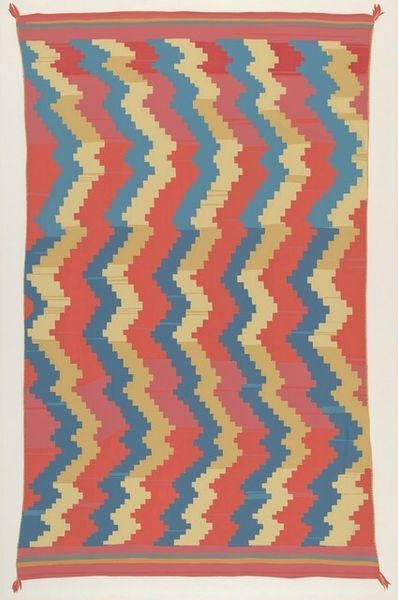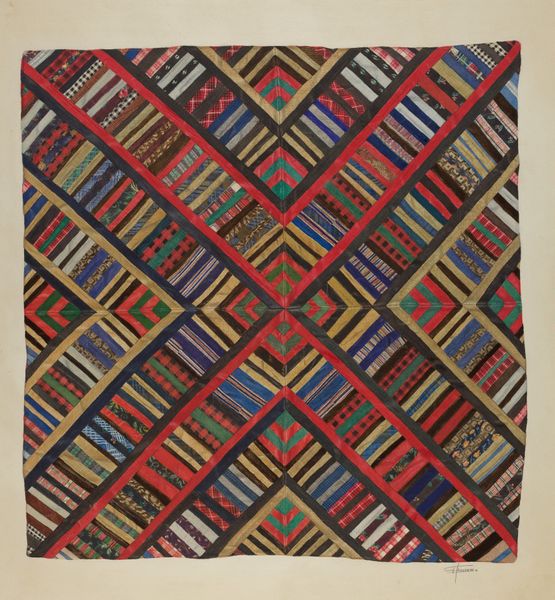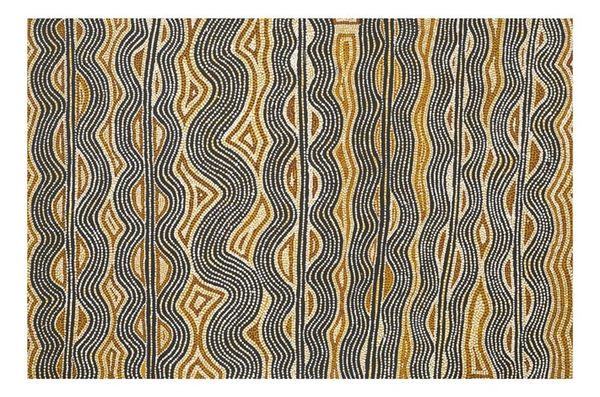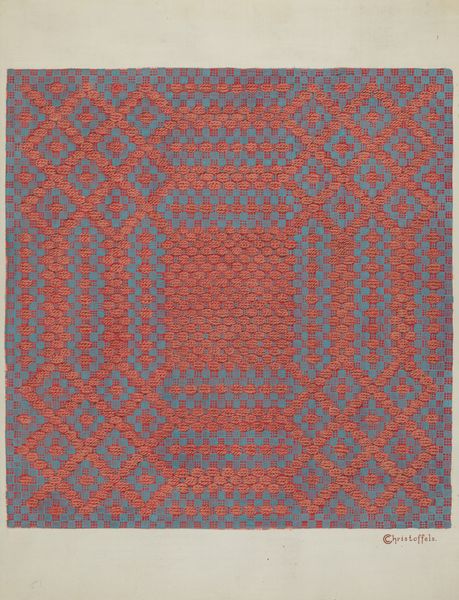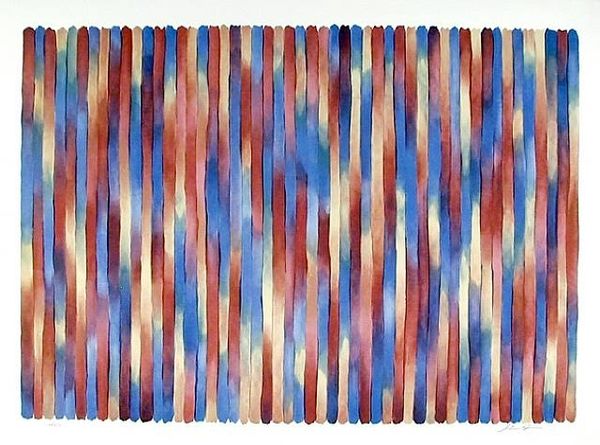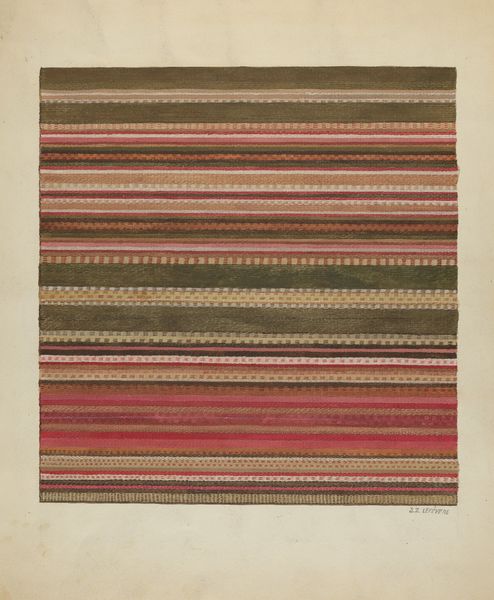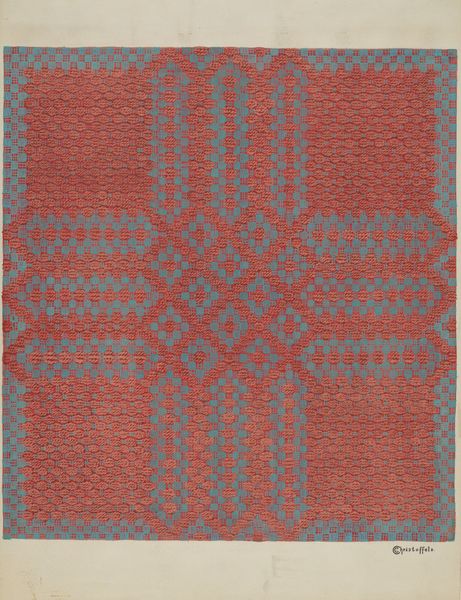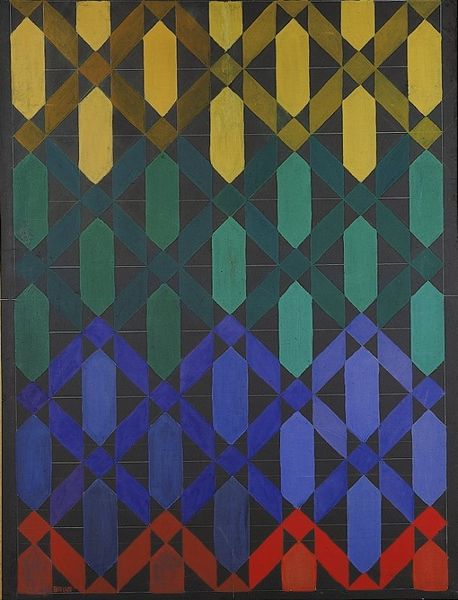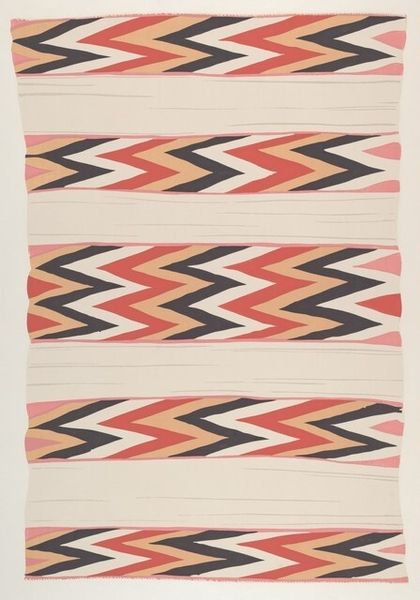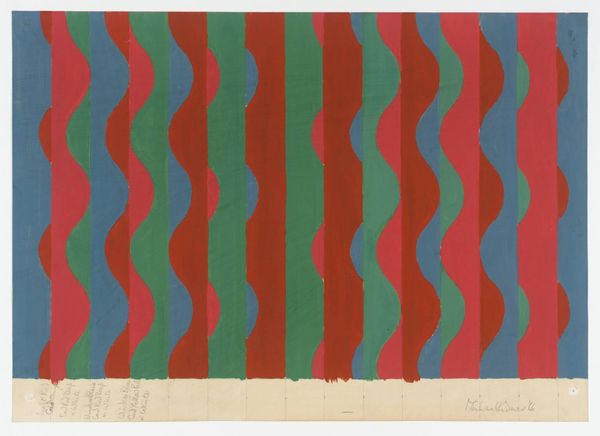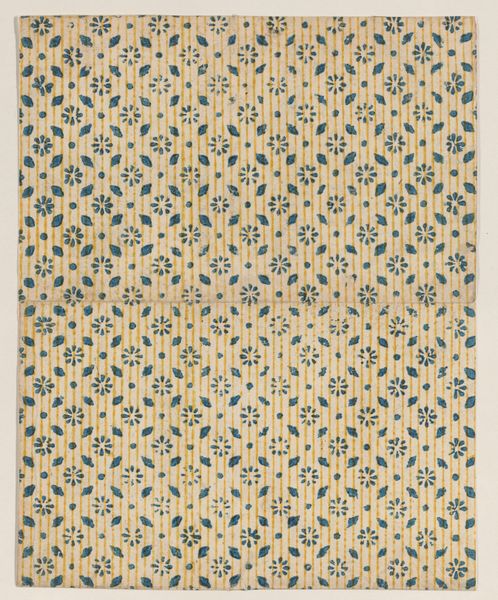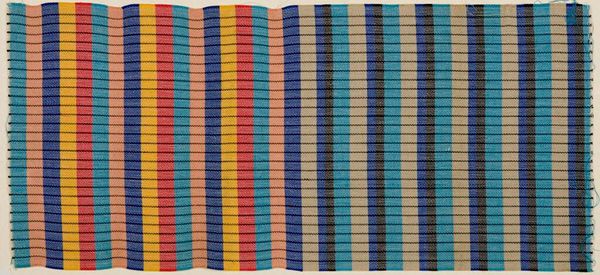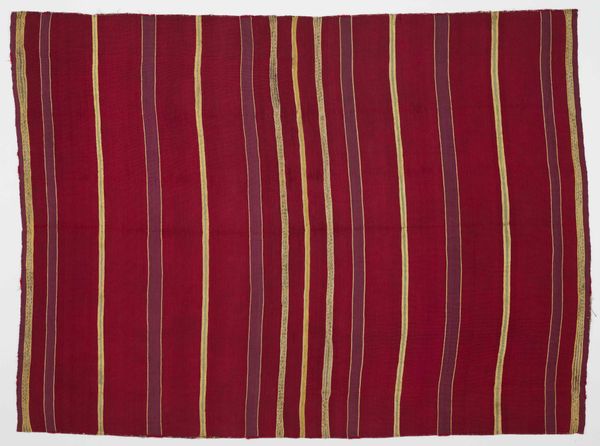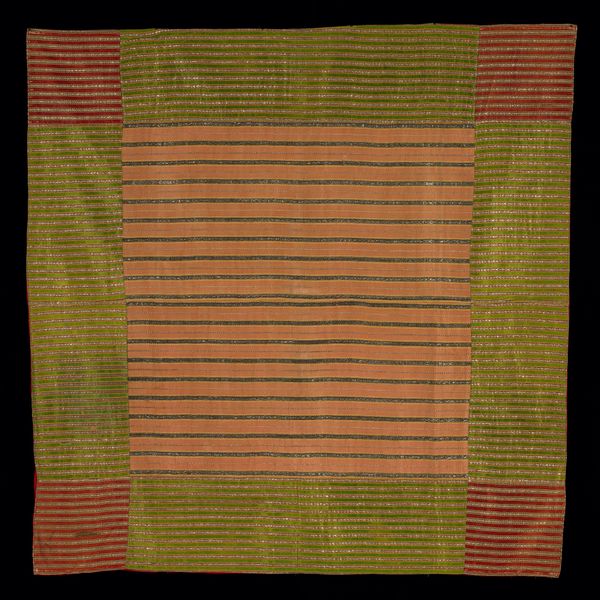
Dimensions: support: 308 x 560 mm
Copyright: © The estate of Michael Kidner | CC-BY-NC-ND 4.0 DEED, Photo: Tate
Editor: This is Michael Kidner’s "Axion Study" from the Tate. It looks like colored pencil on paper. The wavy lines and the colors give the piece an almost textile-like quality. What strikes you about it? Curator: The materiality is key. The repetitive, almost mechanical, application of colored pencil pushes against notions of unique artistic genius. Consider how the labor of creation itself, the sheer act of applying color in such a regimented way, becomes a significant part of the work's meaning. Does that resonate with you? Editor: Absolutely. It makes me think about mass production and the blurring of art and craft. I initially perceived the artwork as an appealing pattern, but now I see the commentary about labor and consumption. It is also a study; does that suggest that the final product is more important than the means? Curator: Perhaps, but by showcasing the study itself, Kidner elevates the process. The "Axion Study" encourages us to consider how artistic intentions are often deeply rooted in the physical act of making and the social conditions of artistic production. Editor: I hadn't thought of it that way before. Now I see the value in considering the labor and production behind even seemingly abstract works of art. Curator: Exactly. By focusing on the materials and process, we gain a deeper understanding of the artist's intentions and the broader social context in which the work was created.
Comments
Join the conversation
Join millions of artists and users on Artera today and experience the ultimate creative platform.
tate 6 months ago
⋮
>With Axion Study, 1965-8, Michael Kidner attempts to create abstract optical illusions through the repetition of vertical stripes and wave shapes in contrasting colours which overlap each other.
